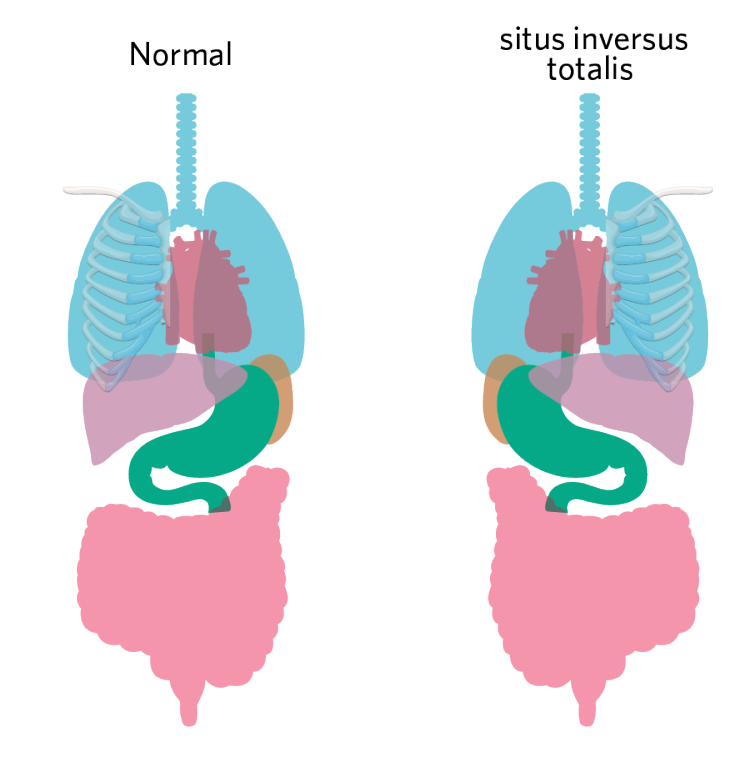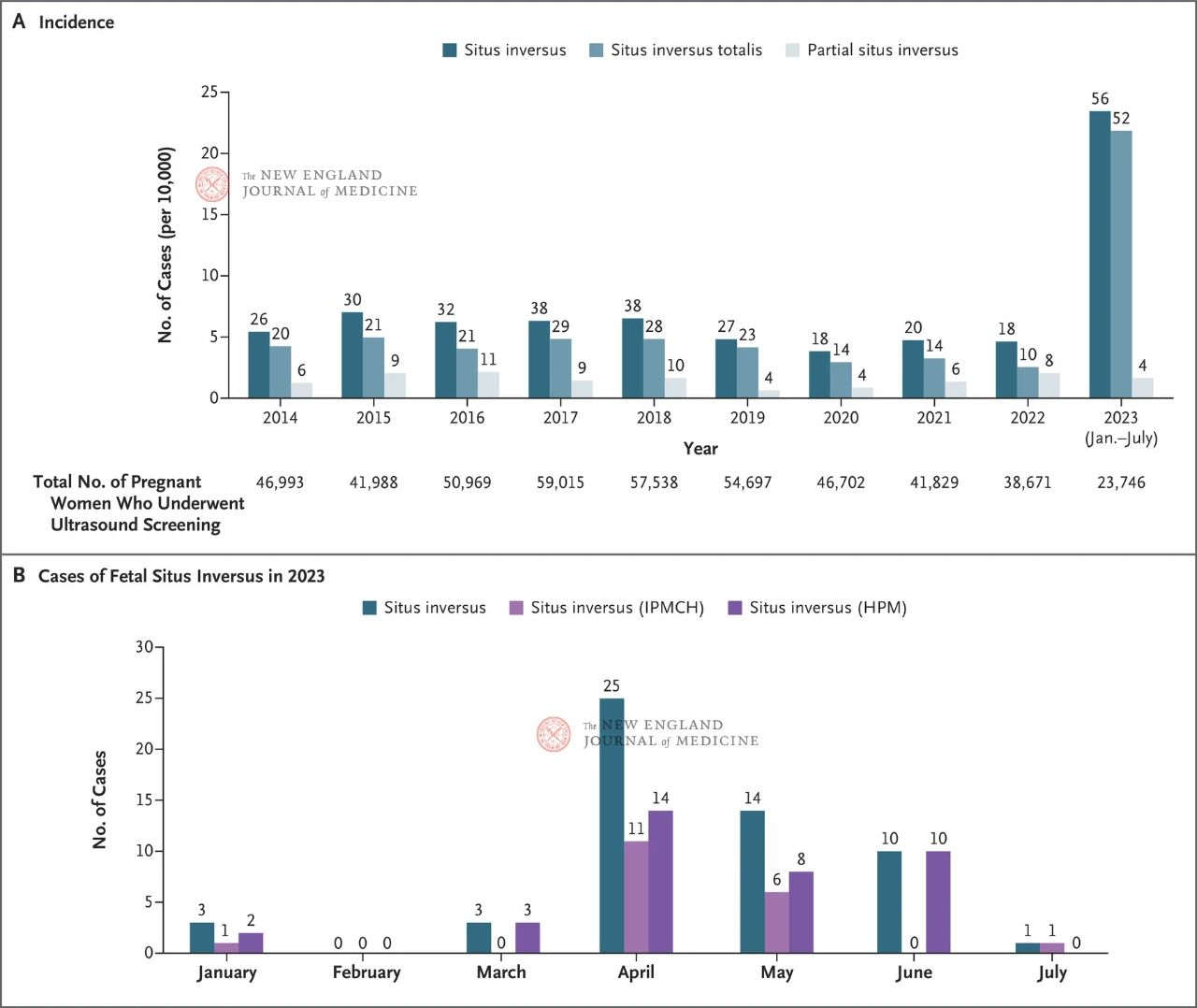Splanchnic inversion (including total splanchnic inversion [dextrocardia] and partial splanchnic inversion [levocardia]) is a rare congenital developmental abnormality in which the direction of splanchnic distribution in patients is opposite to that of normal people. We observed a significant increase in the number of fetal visceral inversion cases confirmed by ultrasound in our hospital a few months after the cancellation of the “zero clearance” policy of COVID-19 in China.
By reviewing clinical data from two obstetric centers in different regions of China, we determined the incidence of fetal visceral inversion from January 2014 to July 2023. In the first seven months of 2023, the incidence of internal inversion (routine prenatal ultrasonography and diagnosis at approximately 20 to 24 weeks of gestational age [without any change in diagnostic protocol or physician training]) was more than four times higher than the average annual incidence for 2014-2022 in both centers (Figure 1).
The incidence of visceral inversion peaked in April 2023 and remained high until June 2023. From January 2023 to July 2023, 56 cases of splanchnosis were found (52 total splanchnosis and 4 partial splanchnosis). The number of SARS-CoV-2 infections surged after the cancellation of the COVID-19 “zero clearance” policy, followed by an increase in visceral inversion cases. It is estimated that the surge in SARS-CoV-2 infections began in early December 2022, peaked around December 20, 2022, and ended in early February 2023, eventually affecting about 82% of China’s population. While no conclusions can be drawn about causality, our observations suggest a possible association between SARS-CoV-2 infection and fetal visceral inversion, which warrants further study.
Figure A shows the confirmed incidence of fetal splanchnic inversion in two obstetric centers from January 2014 to July 2023. The figures at the top of the bar chart show the total number of cases for each year. Incidence was reported as the number of cases per 10,000 pregnant women who underwent ultrasound screening. Figure B shows the number of confirmed cases of visceral inversion from January 2023 to July 2023 at the China Welfare Society International Peace Maternal and Child Health Hospital (IPMCH) in Shanghai and the Hunan Provincial Maternal and Child Health Hospital (HPM) in Changsha.
Congenital visceral inversion is associated with abnormal morphogenetic hormone distribution and left-right organizer cilium dysfunction in early gestation stage of embryo left-right axis asymmetry. Although the vertical transmission of SARS-CoV-2 is still controversial, embryo infection in early pregnancy may affect fetal visceral asymmetrical development. In addition, SARS-CoV-2 may indirectly affect left-right tissue center function through its mediated maternal inflammatory response, thereby impeding visceral asymmetrical development. In future studies, further analysis is necessary to confirm that genetic abnormalities associated with primary ciliary dyskinesia that may not have been detected in prenatal genetic screening are not responsible for these cases, and to assess the potential role of environmental factors in the increase in visceral inpositions. It should be noted that although the incidence of visceral inversion increased in two obstetric centers after the surge of SARS-CoV-2 infection, the clinical phenomenon of visceral inversion is still extremely rare.
Post time: Nov-11-2023






